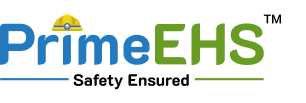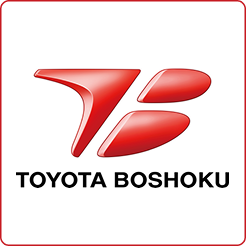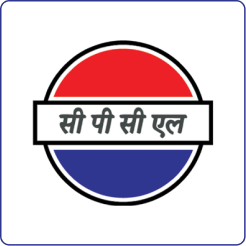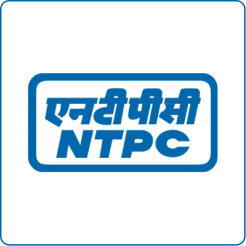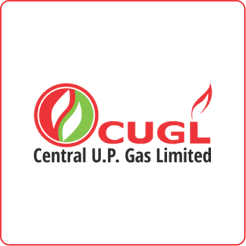Change is inevitable in every business. But in high-risk industries such as oil and gas, mining, power, and chemical manufacturing, change brings more risk than new ways of working. A single modification to equipment, a process, or even a document can alter safety conditions, trigger compliance issues, and sometimes cause costly downtime.
This is why the management of change has become a cornerstone practice in industrial operations. A well-structured management of change system helps organizations capture, assess, review, and implement every modification in a controlled way, keeping people safe and businesses compliant.
In this blog, we’ll discuss the importance of change management, explore the benefits of change management and highlight how digital solutions like PrimeEHS simplify the entire process.
What is Management of Change?
At its core, management of change is a formal process designed to ensure that every adjustment whether it’s large or small is properly assessed and approved before being carried out. This could involve changing machinery, updating operating procedures, replacing raw materials, or even shifting team responsibilities.
Instead of relying on informal approvals or scattered communication, an MoC system creates structure. Every request is submitted, reviewed, and documented. Risks are analyzed, corrective actions are assigned, and approvals are tracked. This means organizations not only handle modifications more effectively but also stay audit-ready at all times.
Put simply, the importance of change management lies in its ability to prevent accidents, protect workers, and maintain compliance while still allowing organizations to innovate and grow.
Why is MoC so important in high-risk industries?
When you’re dealing with hazardous environments, uncontrolled changes can lead to disaster. Many well-documented accidents in heavy industries have been linked to a poor change of management process or worse, no process at all.
Consider these scenarios:
- A new machine part is installed without checking compatibility, leading to a fire hazard weeks later.
- A contractor alters a system but fails to notify the safety team, leaving the company exposed during an audit.
- A process change boosts efficiency but unintentionally increases exposure to harmful chemicals.
Each example highlights the importance of change management in preventing risks from slipping through the cracks. By embedding a structured review and approval process, organizations can ensure safety remains the top priority.
How Management of Change software works
Traditionally, MoC was handled through paper forms, spreadsheets, and emails. While these may suffice for small organizations, they quickly become messy and unreliable as the scale of operations grows. Information gets misplaced, approvals are delayed, and it becomes impossible to prove compliance when an auditor comes knocking.
A digital MoC system solves these problems by giving organizations a single platform to capture, track, and manage the entire change lifecycle. PrimeEHS MoC is one such solution, designed specifically for industries where safety and compliance cannot be compromised.
Here’s how the process flows when managed digitally:
- A change request is submitted using a standard form.
- The system alerts an administrator, who verifies details and assigns the case for risk assessment.
- A risk assessor reviews the proposed change, evaluates hazards using built-in scoring tools, and suggests mitigation steps.
- Department heads and safety officers review the request in sequence or in parallel, adding comments or approvals.
- Corrective or preventive actions are assigned to the right individuals, with clear deadlines and instructions.
- Work is executed, and supporting evidence such as photos or documents is uploaded.
- A final review takes place, ensuring all conditions have been met before closure.
- Throughout the process, every step is logged automatically, and notifications keep all stakeholders updated.
The result is a clear, auditable trail that leaves no room for ambiguity. Everyone knows what stage the change is at, who is responsible, and whether the risks have been addressed.
When should a Management of Change system be applied?
A common misconception is that MoC only applies to big-ticket changes like major equipment installations, new plants, or large-scale process redesigns. In reality, it should apply whenever a modification has the potential to affect safety or compliance, regardless of scale.
That includes:
- Swapping out an old machine part for a new one.
- Updating standard operating procedures.
- Introducing a new chemical or raw material.
- Shifting roles or responsibilities within a team.
- Making alterations to safety-critical documentation.
If there’s a chance that the change might impact people, processes, or the environment, it deserves to go through the MoC process. This “better safe than sorry” approach is what separates safe, compliant organizations from those vulnerable to accidents and fines.
What are the benefits of digital MoC?
The benefits of change management go far beyond avoiding accidents. A well-implemented management of change system delivers value across multiple fronts:
- Improved Safety: Hazards are identified before work begins, not after something goes wrong. Mitigation steps are embedded into the process.
- Stronger Compliance: By maintaining a documented audit trail of every change, companies demonstrate alignment with OSHA, ISO, and industry-specific regulations.
- Smoother Workflows: Automated routing eliminates delays and bottlenecks. Everyone knows the next step and who is responsible.
- Clear Accountability: Each action is assigned to the right person, tracked with timestamps, and supported by documentation or images.
- Real-Time Visibility: Dashboards offer instant insights into open requests, overdue actions, and risk trends.
- Cost Savings: By avoiding rework, downtime, and fines, the advantages of change management extend directly to the bottom line.
Best practices for applying Change of Management
Adopting a digital change of management platform is just the first step. For maximum impact, organizations should:
- Define policies clearly so everyone knows when a request requires MoC.
- Use standardized templates to capture consistent data.
- Train employees on both the importance of change management and the tools available.
- Foster a culture where raising requests is encouraged, not seen as a burden.
- Leverage reports and analytics to identify patterns and improve over time.
These practices ensure that the benefits of change management are not just theoretical but visible in day-to-day operations.
Why PrimeEHS MoC makes a difference
Not all MoC solutions are built the same way. What sets PrimeEHS apart is the way it brings together ease of use, strong functionality, and industry alignment.
The platform offers customizable templates for different types of changes, automated workflows that adjust based on risk level, role-based access controls, integrated risk scoring, corrective and preventive action tracking, image-based documentation, and powerful reporting dashboards.
In short, it’s designed to take the stress and uncertainty out of change management. Instead of scrambling to gather approvals or prove compliance, organizations can rely on PrimeEHS to keep everything structured, traceable, and efficient.
Conclusion
Change is unavoidable. But in high-risk industries, unmanaged change can be dangerous, costly, and even life-threatening. A structured management of change approach ensures every modification is handled responsibly, risks are addressed, and compliance is maintained.
The advantages of change management multiply when supported by a digital platform. With management of change software like PrimeEHS, companies gain transparency, accountability, and confidence that every change from the smallest tweak to the biggest upgrade is controlled and auditable.
For organizations that want safer workplaces, stronger compliance, and smoother operations, the path is clear: invest in a robust management of change system and experience the real benefits of change management in action.
